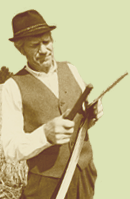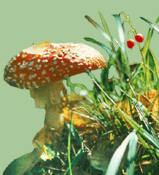Lake Võrtsjärv, River Emajõgi and ourselves
Madis Metsur looks at pro-s and cons of plans to regulate the water of Lake Võrtsjärv. His arhuments convince that rising the water level artificially is probably not a good idea. This year of drought has lowered the water table of Lake Võrtsjärv a great deal and has led to discussions of possible regulation of its waters. The author stresses that it is extremely important to maintain the Lake Võrtsjärv River Emajõgi water system in its natural balance. This natural balance protects towns (especially Tartu town) and villages from frequent floods, absorbing the water and releasing it eventually. He also warns against dams that have caused the decline of environmental quality in many places of Estonia. The specific plans regarding the possible regulation of Lake Võrtsjärv have shown that it would not be possible to maintain a stable water tabel at a desired level: the Emajõgi River has a very low longitudinal profile; moreover, the risk of floods would increase in wet years. The main interest for regulation comes from fishermen and recreation enterprises. However, the specific plans are over 30 years old and as the author concludes, are not worth further discussion.
A grott and a cave
Ants Hein observes the artistic details of Baltic-German manor parks geologists call these details grotts. In manor parks these mean man-made caves, created with the idea of providing shade in hot summer days. In Baltics, the artificial grotts are most numerous in sandstone areas, especially in the Sigulda and Cçsis area in Latvia, former Livonia. The most remarkable manor grotts in Estonia were created in Helme manor park, good examples were also in Õisu. Tartu Toome Hill, Kiidjärve and elsewhere in South Estonia. The old pictures of former grotts (most of them have been destroyed) give us some idea of these man-made structures.
Estonian Nature enquires
Kaili Viilma writes about the effects of the large-scale forest fire on the Agusalu-Kurna landscape protection area and about the future of these burnt areas.
Meelis Tambets looks back ate the extremely dry summer and its effects on the fish fauna.
Petrified moss animals
Oive Tinn and Tõnu Meidla introduce colonial animals, who were abundant and important during the Ordovician era, but are nevertheless relatively little known to scientists. These invertebrates form colonies that look like moss cover or even small bushes. There are about 3500-6000 living species and up to 15 000 fossil species of moss animals. The authors give a short overview of the interesting biology of the animals and the detailed close-up photographs give us the idea of the fossils that can be found from our Ordovician and Silurian limestones.
Tree of the Year: fungi on park willows
Sulev Järve describes some easily recognizable tree fungi that inhabit willows growing in parks. Colourful photographs help to recognize these fungi in nature.
Tree of the Year: Sangaste osier plantation
Heino Kasesalu recalls the positive undertaking of Count Friedrich Berg, who made a remarkable profit while providing the homes for the blind in Russia with raw material the osier willows for basketweaving. Count Berg tested many willow species for the best results and his enterprise was the first and the only of the kind in the Baltic region.
Keeri-Karijärve Nature Protection Area
Piret Kiristaja describes the two lakes, protected flooded meadows of the Elva River and the species-rich forest and meadow communities of a newly founded (2006) protected area in Tartu County. The area is home for many rare species, especially the eagles (Greater Spotted Eagle, in particular). The meadows need special human care, while some parts of the protected area are strictly designed for nature protection and human activity is restricted in these areas.
European rarities in Estonia: the European Golden-Plover
Agu Leivits looks for reasons why the European Golden-Plover feels so well in Estonia, unlike elsewhere in Europe. These birds inhabit raised bogs, and often feed on agricultural landscapes. The species is most abundant in West- and Southwest-Estonia and is constantly expanding its area of distribution and increasing in numbers.
Essay: My Setumaa by Heldur Sander
Interview: Lake Võrtsjärv, in fine state and Lake Peipsi, in mediocre state
Toomas Kukk has interviewed Tiina Nõges, a lake scientist.
Hiking trail: A small lakeland on the foot of the Pandivere Upland
Hanna Maran suggests to visit the Äntu-Nmme nature trail, located between and around numerous lakes. There are 7 natural and 3 artificial lakes.The hiking trail, or nature trail, was founded in 1980ies and it is possible to choose between different distances: the whole trail is 13 km long and encompasses 26 points of interest. The trail takes you through different forest site types, across steep eskers and around different lakes.
A small bomb
Sven Zaèek has not joined islamistic extremists, but shares his observations of Pygmy Owl, whose hunting habits remind bombing. This European smallest owl is often visible during daytime, since it is endangered by its larger relatives in dark.
Practical tips: birdwatching in a world city
Uku Paal went birdwatching to New York and shares his experiences from the bird areas of the NY Central Park and Jamaica Bay. Although is might sound strange to go birdwatching in a world metropol, New York turned out to be a very attractive place for both the birds and birdwatchers. Active birdwatchers have spotted over 200 species in Central Park. Jamaica Bay is a nature protection area on the NY coast and offers good habitats for numerous birds and good look-outs for enthusiastic birdwatchers.
The valuable map collection of Nils Nordenskiöld
Tõnu Raid, an expert of old maps, takes a glance at the valuable heritage of a world-famous explorer Nils Nordenskiöld (1832-1901). His collection of maps, now owned by the library of Helsinki University, is a real pearl and belongs to the UNESCO list of mental heritage. Collecting old maps was a passion and hobby of the explorer and his library includes numerous invaluable geography books and atlases, and over 24 000 maps that have been printed before 1800.
| 

![[IN ENGLISH]](images/gb.gif)





